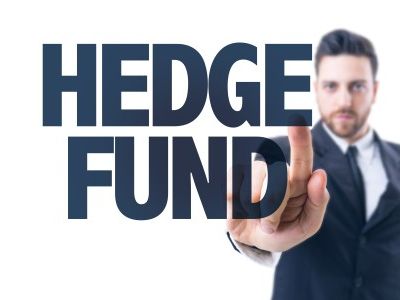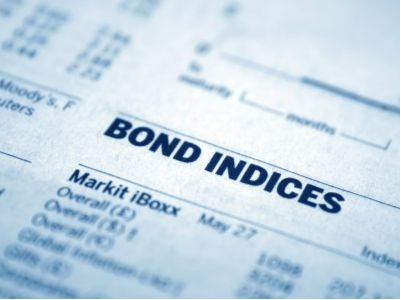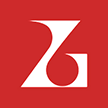Zhongjin: actively increasing equity fund positions, adding to non-bank electric and new energy stocks.
2024-10-30 21:29
In the third quarter of 2024, the number of new ordinary stocks and mixed-equity funds issued were 6 and 63, with issue quantities of 1.65 billion shares and 10.86 billion shares respectively. The issuances have been persistently weak, and sentiment is in need of improvement.
Recently, the third quarter report for public funds in 2024 has been fully disclosed. In this report, we analyze the active equity category from the perspectives of market overview, performance review, portfolio analysis, and market outlook. Unless otherwise specified, the statistical scope of active equity funds in the following text refers to equity funds that invest in ordinary stocks, hybrid stocks, and flexible allocation funds with stock investment market value accounting for over 60% of the total portfolio value, as classified in the Wind secondary investment types.
Market Overview
Issuance: Issuance remains weak, sentiments need improvement
Looking at the issuance situation, the sentiment in the equity market has cooled again. In 2024Q3, there were 6 new ordinary stock funds and 63 hybrid stock funds issued, with 1.65 billion shares and 10.86 billion shares issued respectively, and an average fundraising size of 180 million yuan. There were no new issuances of flexible allocation funds. Overall, the number of equity products issued remained relatively stable compared to Q2, but due to the prolonged bearish sentiment in the equity market, the issuance size shrank significantly compared to Q2, indicating that market risk appetite needs to be restored.
Chart 1: Historical issuance count of ordinary stock, hybrid stock, and flexible allocation funds
Chart 2: Historical issuance size of ordinary stock, hybrid stock, and flexible allocation funds
From a specific product perspective, during the market bottoming stage, it has become common for fund initiators with low thresholds and short fundraising periods. In 2024Q3, there were 35 new equity funds (including ordinary stock, hybrid stock, and flexible allocation) initiated, accounting for more than half of the total. With multiple favorable policies in place and the value style advantage becoming prominent, many fund companies continued to position themselves according to the trend, focusing on keywords like "dividend/stock dividends/value" for product classification in advance. Corresponding style new products accounted for 15 funds with a total fundraising size of 3.47 billion yuan, accounting for 21.7% and 27.7% respectively.
Chart 3: Top 10 issuance sizes of ordinary stock, hybrid stock, and flexible allocation funds in 2024Q3
Stock: Stock size increasing, top products expanding
Looking at the stock situation, the number of active equity fund products has steadily increased, reaching 4154 by the end of 2024Q3, with year-on-year and quarter-on-quarter growth rates of 5.9ppts and 0.9ppts respectively. Among them, there were 566 ordinary stock funds, 2511 hybrid stock funds, and 1077 flexible allocation funds. At the same time, the overall size has started to rebound, reaching 3.61 trillion yuan by the end of 2024Q3, with an increase of 7.4ppts compared to the previous quarter.
Chart 4: Historical stock count of active equity funds
Chart 5: Historical stock size of active equity funds
From the fund product dimension, top products received inflows of funds and generally outperformed. We have compiled information on the top 10 products by size and top 10 products by size growth in 2024Q3. Overall, most of the top products received inflows in 2024Q3. As of the end of the quarter, E Fund Blue Chip Selection remained the top active equity product in terms of size, with the latest size reaching 43.83 billion yuan.
In terms of size growth, all top 10 funds achieved positive returns in 2024Q3, with 9 funds earning over 10% returns, significantly outperforming the hybrid stock fund index (10.7%). Among them, E Fund Blue Chip Selection, Zhong Ou Medical Health A, and Da Cheng High-Tech Industry A showed prominent size growth in 2024Q3, with increases of 4.8 billion yuan, 4.64 billion yuan, and 3.48 billion yuan respectively.
Chart 6: Top 10 active equity funds by size in 2024Q3
Chart 7: Top 10 active equity funds by size growth in 2024Q3
From the perspective of fund managers, the top managers saw an increase in managed size, representing product performance differentiation. As of 2024Q3, out of the top 20 active equity fund managers in terms of size, 19 managers saw an increase in managed size.
In terms of representative product performance, there was some level of differentiation. In 2024Q3, the average return of the top 20 active equity fund managers was 11.3%, outperforming the hybrid stock fund index performance (10.7%) during the same period. However, there was some degree of performance differentiation within the top 20 managers in terms of internal and annual performance.
Meanwhile, the number of managers of active equity funds with assets over 10 billion yuan has slightly increased, with a total of 87 managers as of 2024Q3, an increase of 4 managers compared to the previous period (including 13 new managers, 6 managers leaving, and 3 managers retiring), accounting for 4.5% of all active equity fund managers.
Chart 9: Number and percentage of managers of active equity funds with assets over 10 billion yuan
Chart 10: Concentration of management institutions for active equity funds
From the perspective of fund companies, top institutions saw an expansion in managed size, relative stability in rankings, and an increase in concentration. As of 2024Q3, we have compiled information on the number of products managed by active equity fund management institutions.The relevant information such as the scale, total size, and number of fund managers of the institutions are shown in the table below. Overall, the top institutions' management scale is mostly expanding. As of 2024Q3, E Fund Management Co., China Europe Fund, and Fullgoal Fund are ranked top with management scales of 260.8 billion yuan, 193.5 billion yuan, and 180.9 billion yuan respectively. In terms of ranking changes, the rankings remain relatively stable. In 2024Q3, ICBC Credit Suisse Fund and Da Cheng Fund improved their rankings compared to the previous quarter, while Bank of Communications Schroders Global and Oriental Securities Asset Management had slight decreases in their rankings.From the perspective of the concentration of management agencies, the previous upward trend continues. As of 2024Q3, the CR5/CR10/CR20 of active equity fund management institutions were 26.8%, 45.4%, and 66.9% respectively, with MOM growth rates of 0.3ppt, 0.5ppt, and 0.1ppt.
Chart 11: Latest management scale TOP20 of active equity fund management institutions in 2024Q3
Note: Data as of 2024.09.30; Green/yellow/red represent current rankings compared to previous period in ascending/tied/declining order; Ranked in descending order by the latest management scale; Statistics only include active equity portion
Source: Wind, Zhongjin Research Department
Performance Review
Looking back at 2024Q3, the market continued its previous adjustment trend, with low trading volume and weak risk appetite. Not until late September did the steady growth signals release, driving rapid market valuation recovery with incremental funds entering the market. In 2024Q3, the returns of the Shanghai Stock Exchange 300, CSI 500, CSI 1000, and Wendell A Index were 16.1%, 16.2%, 16.6%, and 17.7% respectively, with the average performance of active equity funds characterized by stock-type fund index also rising by 10.7%.
Furthermore, we differentiate the performance of different types, investment methods, thematic categories, and style categories of active equity funds in 2024Q3.
Differentiating by investment types, ordinary stocks, partial equity hybrid, and flexible allocation funds had median returns of 11.6%, 10.4%, and 9.7% in 2024Q3, unable to outperform mainstream broad-based indices such as the Shanghai Stock Exchange 300 and CSI 500 during the same period.
Chart 12: Quarterly return distribution of active equity funds of different investment types
Note: Data as of 2024.09.30; Excluding the establishment period, i.e., products with less than 3 months since inception
Source: Wind, Zhongjin Research Department
Chart 13: Annual return distribution of active equity funds of different investment types
Note: Data as of 2024.09.30; Excluding the establishment period, i.e., products with less than 3 months since inception
Source: Wind, Zhongjin Research Department
Chart 14: Top 5 quarterly returns of active equity funds of different investment types
Note: Data as of 2024.09.30; Excluding funds with total scale less than 200 million yuan up to 2024Q3; Ranked in descending order by quarterly returns within the same category
Source: Wind, Zhongjin Research Department
Differentiating by investment methods, quantitative methods have a slight edge. The median returns of subjective and quantitative active equity funds in 2024Q3 were 10.2% and 12.5% respectively, with some quantitative products leading due to position and thematic advantages.
Chart 15: Quarterly return distribution of active equity funds of different investment methods
Note: Data as of 2024.09.30; Excluding the establishment period, i.e., products with less than 3 months since inception
Source: Wind, Zhongjin Research Department
Chart 16: Annual return distribution of active equity funds of different investment methods
Note: Data as of 2024.09.30; Excluding the establishment period, i.e., products with less than 3 months since inception
Source: Wind, Zhongjin Research Department
Chart 17: Top 5 quarterly returns of quantitative active equity funds
Note: Data as of 2024.09.30; Excluding funds with total scale less than 200 million yuan up to 2024Q3; Ranked in descending order by quarterly returns within the same category
Source: Wind, Zhongjin Research Department
Differentiating by thematic categories, financial and real estate theme funds lead. With multiple policy positives, the previously undervalued non-bank and real estate sectors became the leaders of the rebound. Correspondingly, thematic funds had better performances, with the median return of financial and real estate theme funds reaching 20.2% in 2024Q3; other theme funds also had varying degrees of improvement.
Chart 18: Quarterly return distribution of active equity funds of different thematic categories
Note: Data as of 2024.09.30; Excluding the establishment period, i.e., products with less than 3 months since inception; Thematic categories are divided based on the latest label data
Source: Wind, Zhongjin Research Department
Chart 19: Annual return distribution of active equity funds of different thematic categories
Note: Data as of 2024.09.30; Excluding the establishment period, i.e., products with less than 3 months since inception; Thematic categories are divided based on the latest label data
Source: Wind, Zhongjin Research Department
Chart 20: Top 5 quarterly returns of active equity funds of different thematic categories
Note: Data as of 2024.09.30; Excluding funds with total scale less than 200 million yuan up to 2024Q3; Ranked in descending order by quarterly returns within the same category; Thematic categories are divided based on the latest label data
Source: Wind, Zhongjin Research Department
Differentiating by style categories, small-cap value styles have a slight advantage. Overall, the difference in returns of different style category funds in 2024Q3 is limited, with small-cap value styles slightly outperforming, with a median return of 11.7%, while the median returns of other style categories were also above 10%.
Chart 21: Quarterly return distribution of active equity funds of different style categories
Note: Data as of 2024.09.30; Excluding the establishment period, i.e., products with less than 3 months since inception; Style categories are divided based on the latest label data
Source: Wind, Zhongjin Research Department
Chart 22: Annual return distribution of active equity funds of different style categories
Note: Data as of 2024.09.30; Excluding the establishment period, i.e., products with less than 3 months since inception; Style categories are divided based on the latest label data
Source: Wind, Zhongjin Research Department
Chart 23: Top 5 quarterly returns of active equity funds of different style categories
Note: Data as of 2024.09.30; Excluding funds with total scale less than 200 million yuan up to 2024Q3; Ranked in descending order by quarterly returns within the same category; Style categories are divided based on the latest label data
Source: Wind, Zhongjin Research DepartmentAccording to the latest label data segmentationData source: Wind, Zhongjin Research Department
Position Analysis
Asset allocation: Positions generally increased, Hong Kong stock allocation continues to heat up
From the perspective of stock positions, the positions of active equity funds have generally increased. As of 2024Q3, calculated by the overall method, the stock position of active equity funds was 87.4%, an increase of 1.0 ppt compared to the previous quarter; among them, the stock positions of ordinary stock funds, partial equity mixed funds, and flexible allocation funds were 89.9%, 87.3%, and 86.0% respectively, with increases of 1.6 ppt, 0.9 ppt, and 0.8 ppt respectively.
From the perspective of specific products, 65.4% of active equity funds increased their positions compared to the previous period, with 8.7% and 13.8% of active equity products increasing their positions by over 10% and between 5% and 10% respectively. Nearly 70% of products adjusted their positions by less than 5%.
Figure 24: Historical stock positions of different investment type active equity funds
Note: Data as of 2024.09.30
Data source: Wind, Zhongjin Research Department
Figure 25: Distribution of stock position adjustments of active equity funds (24Q3)
Note: Data as of 2024.09.30
Data source: Wind, Zhongjin Research Department
From the perspective of Hong Kong stock investments, the allocation to Hong Kong stocks continues to increase, with the number of active equity funds heavily invested in Hong Kong stocks expanding. Quality assets in the Hong Kong stock market have strongly attracted funds from the mainland. As of 2024Q3, the number of active equity products heavily invested in Hong Kong stocks surged to 1818, with an increase of 5.5% compared to the previous period; the allocation to Hong Kong stocks continued to rise to 11.4%, with the total market value of Hong Kong stocks held reaching 359.31 billion yuan, an increase of 16.8% compared to the previous period.
Figure 26: Market value and proportion of Hong Kong stock investments by active equity funds
Note: Data as of 2024.09.30
Data source: Wind, Zhongjin Research Department
Figure 27: Number and proportion of active equity funds heavily invested in Hong Kong stocks
Note: Data as of 2024.09.30
Data source: Wind, Zhongjin Research Department
Industry allocation: Increased holdings in electronics, new non-bank financials, reduced holdings in utilities and cyclical sectors
From a cross-sectional perspective, as of 2024Q3, in terms of the proportion of heavy asset allocations, electronics still sits as the top industry for active equity funds, with an allocation of 15.1%; followed by pharmaceuticals, electric equipment and new energy, and food and beverage, with allocations of 11.3%, 11.2%, and 9.0% respectively. In terms of the proportion of active allocations relative to the 800 Index, active equity funds significantly overweight industries including electronics, pharmaceuticals, electric equipment and new energy, and communication, with overweight ratios of 6.0%, 3.7%, 3.5%, and 2.3% respectively, while maintaining substantial underweight in banks and non-bank financial sectors (underweight rates of 7.1% and 8.4%, respectively).
In terms of sequential changes in allocation ratios, energy and auto manufacturing sectors have seen increased holdings, with allocation ratios of 2.0% and 0.6% respectively, while non-bank financials and real estate have also seen increased allocations, with ratios of 1.0% and 0.4% respectively; reductions have mainly concentrated in the utilities and public utilities sectors, with a reduction ratio of 1.2%, while minor reductions were also seen in non-ferrous metals, petroleum and petrochemicals, and computer industries, with ratios of 0.7%, 0.5%, and 0.5% respectively.
In terms of active allocation ratios (excluding passive changes in positions due to industry fluctuations), non-bank financials and real estate take the lead with active allocation ratios of 0.7% and 0.2%, while increased holdings in industries such as electronics and autos are more due to their own growth. In terms of reductions, the active reduction in allocations in the electronics, food and beverage, and pharmaceutical industries is significant (all exceeding 2%), and the reduction in allocations in the utilities and non-ferrous metals sectors also increases after excluding their own growth.
Figure 28: Industry concentration and holding trends of major industries in active equity funds as of 2024Q2
Note: Data as of 2024.09.30
Data source: Wind, Zhongjin Research Department
In terms of industry concentration, there is a turning point. As of 2024Q3, the top 5 industries with heavy holdings by active equity funds accounted for 52.0%, an increase of 0.7% compared to the previous period; the industry HHI was 7.6%, an increase of 0.2%.
In terms of Hong Kong stocks, the industry concentration of heavy holdings by active equity funds is mainly in non-essential consumption and information technology industries, with allocation ratios reaching 27.9% and 24.9%, respectively. In terms of sequential changes in allocation ratios, there was a significant reduction in energy industries, while increased holdings were due to adjustments in constituents of the Hang Seng Index (such as the inclusion of 33 Hong Kong stocks, mainly in the non-essential consumption sector). Similarly, when excluding the industry's own fluctuations in positions, the active reduction in the energy industry has narrowed, but is still relatively prominent, while the non-essential consumption industry continues to show an increasing allocation trend.
Figure 29: Industry concentration of heavy holdings by active equity funds
Note: Data as of 2024.09.30
Data source: Wind, Zhongjin Research Department
Figure 30: Industry allocation of heavy holdings in Hong Kong stocks by active equity funds
Note: Data as of 2024.09.30
Stock characteristics: Large-cap value style favored, preference for value style increases
From the perspective of stock style, the holdings and value style preferences of active equity funds have shown a significant increase. As of 2024Q3, the proportional value of heavy holdings and value style scores of active equity funds were 51.1% and 46.0%, with changes of 1.3 ppt and 1.7 ppt respectively compared to the previous period, and -2.0 ppt and 1.0 ppt compared to the same period last year. At the same time, preferences for growth and profit continue to moderately increase, with style scores of 61.9% and 79.1% as of 2024Q3, with increases of 0.2 ppt and 0.5 ppt respectively. Overall, the value style preferences of heavy holdings in active equity funds have increased, and the preferences for growth and profit styles are gradually warming up.
Figure 31: Style characteristics of heavy holdings by active equity funds
Note: Data as of 2024.09.30
Data source: Wind, Zhongjin Research DepartmentResearch Department of Jin CompanyChart 32: Number of Top Holdings and Concentration of Active Equity Funds
Note: Data as of 30th September 2024
Data Source: Wind, CICC Research Department
In terms of the number of top holdings, there has been a decrease again. As of Q3 2024, the number of top holdings of active equity funds reached 2356, a decrease of 22 compared to the previous period. In terms of the concentration of top holdings, it has shown a more concentrated trend. As of Q3 2024, the CR10 reached 20.1%, an increase of 1.5ppt compared to the previous period, while the CR20/CR50 reached 29.6%/43.6%, an increase of 1.4ppt/0.5ppt respectively.
Top Holding Details: Increased allocation to leading electric companies, continued reduction in liquor companies
In the A-share market, in terms of the market value of top holdings by active equity funds, Ningde Times remains at the top with a market value of 68.91 billion yuan, accounting for 3.8% of the total holding market value, with the number of funds holding it increasing significantly to 1023, approximately 1/4 of active equity funds with top holdings; Guizhou Maotai ranks second, with a fund holding market value of 46.99 billion yuan, accounting for 2.6% of the total holding market value, held by 642 funds.
Among the top holdings of funds in terms of market value, Ningde Times, Sungrow Power, Midea Group, and BYD saw increases in holdings, but after excluding their own price increases, Ningde Times shifted from increased holdings to reduced holdings. The magnitude of holdings increases in other stocks also narrowed to varying degrees; as for reductions, Guizhou Maotai and Wuliangye saw active reductions, and Luzhou Laojiao even dropped out of the top 10 list.
Chart 33: Top 10 A-share Holdings Market Value of Active Equity Funds in Q3 2024
Note: Data as of 30th September 2024; ranked in descending order of percentage of shares held
Data Source: Wind, CICC Research Department
In the Hong Kong stock market, Tencent Holdings ranks first in terms of the market value of top holdings by active equity funds, reaching 46.34 billion yuan, accounting for 2.5% of the total holding market value, held by 649 funds, an increase of 147 compared to the previous period; Meituan-W and CNOOC follow, with fund holding market values of 20.84 billion yuan and 13.48 billion yuan respectively, held by 297 and 142 funds.
Among the top holdings of funds in terms of market value, Alibaba, a new addition to the Hong Kong Connect Index, received 13.38 billion yuan in capital inflow, while internet giants Tencent Holdings and Meituan-W saw slight increases in holdings, and CNOOC saw a more significant reduction.
Chart 34: Top 10 Hong Kong Holdings Market Value of Active Equity Funds in Q3 2024
Note: Data as of 30th September 2024; ranked in descending order of percentage of shares held; Hong Kong stocks classified by Hang Seng Industries
Data Source: Wind, CICC Research Department
Overall, the trend of increased/decreased allocations of top holdings by active equity funds mirrors the fluctuations in individual stock prices. As of Q3 2024, the average returns of the top 10 stocks with the most increased holdings were 39.2%, while the average returns of the top 10 stocks with the most decreased holdings were -1.4%.
Chart 35: Top 10 Stocks with the Most Increased/Decreased Holdings by Active Equity Funds in Q3 2024
Note: Data as of 30th September 2024; ranked in descending order of the proportion of increased/decreased holdings
Data Source: Wind, CICC Research Department
Market Outlook of Fund Managers
We have selected active equity fund managers with assets under management exceeding 10 billion yuan as of Q3 2024, and summarized their investment strategies and operational analysis disclosed in their quarterly reports, in order to distill their outlook on the equity market.
Overall, fund managers with assets exceeding 10 billion yuan are relatively optimistic about the future performance of the equity market: with continued policy efforts to optimize, domestic economy is expected to stabilize and rebound, market risk appetite is restored, and the positive factors of equity assets continue to accumulate. However, uncertainties in the external environment still exist, and policy implementation and economic fundamentals data need further verification, requiring close monitoring. In terms of structure, attention is relatively focused on sectors directly benefiting from comprehensive policy boosts, with expectations of significant improvements in fundamentals in non-bank, real estate, and consumer sectors, as well as technology growth sectors such as electronics and semiconductors, which are expected to continue their growth trend as market risk appetite rises and industrial development trends.
RECOMMEND

AMAC: In January, 137 new asset-backed special plans were filed, with a total scale of 1122.64 billion yuan.
26/02/2025

Schroder Investment: Investors should consider allocating funds to securitized credit and insurance-linked securities.
26/02/2025

Reuss County Asset Annual Reflection: Policy Tipping Point is very clear. The semiconductor industry in 2025 is a game for the brave.
26/02/2025


